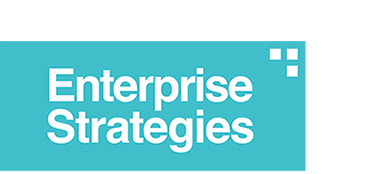20 Apr Internal communications is just the beginning for social success
This post originally appeared on Sitrion’s blog.
 First let me start by saying that internal communications is a very valid use case for enterprise social. In many organizations it is a leading use case and the communications group or department may be a leading stakeholder and proponent of social. These are things that can really help you with getting organizational buy-in and be a strong platform on which to initially launch enterprise social.
First let me start by saying that internal communications is a very valid use case for enterprise social. In many organizations it is a leading use case and the communications group or department may be a leading stakeholder and proponent of social. These are things that can really help you with getting organizational buy-in and be a strong platform on which to initially launch enterprise social.
What I’d like to propose is that internal communications should not be your only use case.
More than a push
Historically, internal communications has used a “push” approach to messaging to communicate important content to employees within an organization. Enterprise social technologies now enable us to take a push or pull approach to communications, allowing employees to subscribe or “follow” content, communities, individuals, and keywords. It also allows communications to be bi-directional and invites feedback and conversation around content and communications. This is all part of what makes internal communications such a great use case and why you may find that your communications department is leading the way for social.
The evolution of your workday
So why is it important to look beyond internal communications when planning for successful adoption of enterprise social? This is mainly because internal communications are not typically integral to getting your daily work done. Yes they are important and could demand your attention on a periodic basis or centered on certain events, but the content and messaging is not central to the business processes that typically drive the tasks and events of your day.
Successful adoption, continued maturity, and realization of business value hinges on changing the way you work by moving from working in one way to working in a new, more collaborative, and open way. “Make work better” refers to the evolution of your daily work. This happens when business processes are enabled by social, the content, conversations and data, and these complement one another and are merged into a single holistic view.
Imagine you are part of a community of sustainability advocates within your organization. As part of a community of practice, each of the advocates has a “day job” and contributes to the community as part of their role within the organization. You all have something in common, however; you are promoting sustainable practices within your local office, team, or department.
As part of the role, you offer sustainability educational events and engage with the local community. You track your activities through a corporate sustainability calendar, publish details about the events, and align with your peers to ensure there are no scheduling conflicts. Materials are reused when possible and knowledge is captured within the community. This community becomes a place to get work done for the sustainability advocates; it’s integral to their success in their role and enables them to do their daily work.
Look beyond the content
So when you think about what enterprise social business success looks like for your organization, ensure you are looking beyond just the content. You can do this by identifying business cases where merging, content, data, and the context provided by your employees through conversation will truly help enable and accelerate business processes. Because if it’s not helping you with your daily work, then social will always be a “nice to have” versus a “have to have” and you will not realize the full potential of what social can do for your business.
Follow Allison on Twitter.

